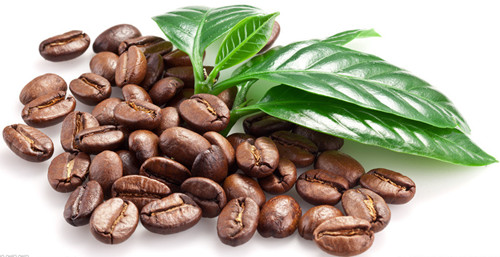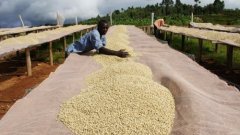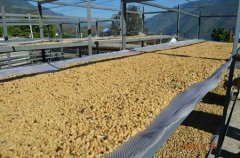Introduction to the treatment of raw beans-- what is the washing method? How to deal with raw coffee beans
Water washing method-increase fruit acid spirit:
Water washing is the most popular treatment method at present, and it is used in almost all Central and South America except Brazil. The color of the washed beans is blue and green, the appearance of the beans is neat and the pulse is good, and the coffee quality is the highest. Generally speaking, the sour flavor and bright feeling of washed beans are better, and the flavor is clean and free of miscellaneous flavor, which is the most commonly used treatment of fine coffee, but the cost is not small. On average, it takes 2-10 liters of clean water to wash 1 kilogram of coffee fruit, while 1 kilogram of coffee fruit can only take 200 grams of coffee beans. It is difficult for water-scarce areas to bear such a water-consuming method.

Washing is the most technical way to pick up beans, and the quality of coffee is ensured through multiple sieving procedures. First move the red fruit and half-green and half-red fruit that have sunk into the sink into a large or medium-sized pulp screening machine (PulpingMachines). It is cleverly designed to mechanically press the fruit into a sieve hole, which is exactly the size of the pod (both sheepskin-wrapped coffee beans) to filter out the flesh outside the pod-using unripe fruit to be harder. Pods are not easy to squeeze out, but mature fruits are soft, and pods are easily squeezed out to ward off unripe beans and filter out the sweetest pods, so the setting of machine thrust is very important. too much force will squeeze out hard and astringent unripe beans, damaging the quality of fine beans. The general push force is set to allow 3% of red fruit pods to be squeezed into the sieve hole to ensure that all stiff green fruits are removed.
After taking out the sticky pods of the red fruit, move them into a large sink, followed by the most important washing and fermentation to remove pectin shavings from the pods. This sticky material is not easy to wash away with water, so it is necessary to hydrolyze the pectin with all kinds of bacteria in the tank, decompose the pectin and wash the pods in the tank to accelerate the pectin to break away from the pods. The fermentation process takes about 16 to 36 hours, depending on temperature and humidity, when malic acid is naturally produced in the tank. Citric acid. Acetic acid. Lactic acid and propionic acid. Interestingly, the raw bean itself contains almost no acetic acid, but the fermentation process of washing treatment can increase the acetic acid concentration of the bean, which is beneficial to the flavor of coffee. Not only can these acids inhibit mold parasitism, some acid elves will also be mixed into beans (which is why washed beans taste so sour), but samples must be taken at any time to see if the sticky pectin on the pods is clean, and then decide whether to stop fermentation and take out clean pods. Once it lasts more than 36 minutes, it may ferment too much, producing too many fatty acids and butynic acid and giving off a bad smell. Moreover, beans mixed with too much acid will make coffee too sour and Chongqing is a bad bean!
Important Notice :
前街咖啡 FrontStreet Coffee has moved to new addredd:
FrontStreet Coffee Address: 315,Donghua East Road,GuangZhou
Tel:020 38364473
- Prev

Introduction to the treatment of raw beans-- what is half-sun treatment? How
Brazilian half-sun-natural removal of pectin: Brazil used to use the sun method in the past, the quality varies greatly, so that Brazil Yu is synonymous with middle and lower quality. However, in order to improve its quality and reverse its image, the world's largest coffee producer carried out a quality revolution in the 1990s and vigorously promoted the global half-sun method. Brazilian coffee fields are endless and are mostly harvested mechanically to conform to the classics.
- Next

Introduction to the treatment of raw beans-- what is the sun treatment? How to deal with it
Solarization-the oldest bean-producing countries, Ethiopia and Yemen, almost all use the sun to get beans, take out the red fruit and half-green and half-red fast-ripening fruit that have sunk to the bottom of the trough, and spread them in a bean drying farm for natural drying. The time depends on the weather. It takes about two to four weeks to reduce the water content of the coffee beans in the fruit to 12% and harden, and then use a sheller to remove the stiff pulp and
Related
- What is the meaning of lactic acid fermentation with coffee bean treatment?
- How to judge the state of foam by sound?
- How does the latte pull out the unicorn pattern? Come to get for a little trick to improve the flower pull!
- Will flower pulling affect the taste of the latte?
- Do you know the history of coffee?
- The difference between honey treatment and sun washing what is raisin honey treatment?
- What kind of milk can a novice use to make coffee foam to keep the foam longer? The correct method and skills of milking tutorial sharing
- Why do washed coffee beans taste sour? Flavor characteristics of washed Coffee
- Introduction to the skill of how to practice the size and height of water injection around the circle of hand-brewed coffee
- How do beginners practice coffee flower drawing from scratch?

